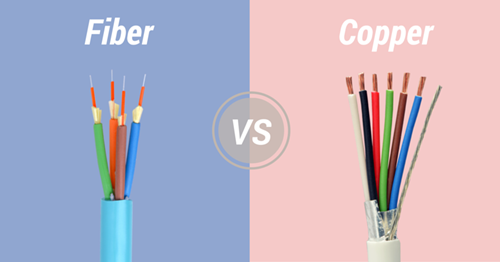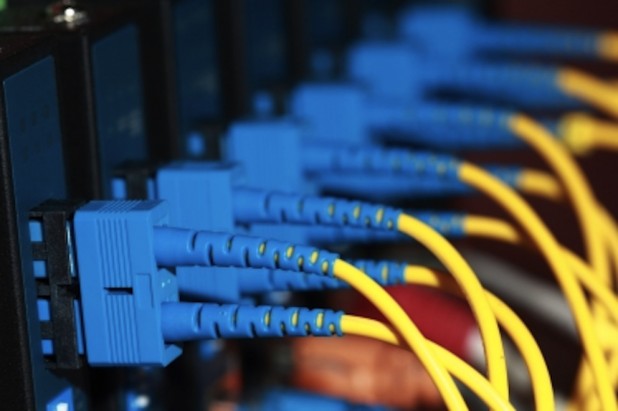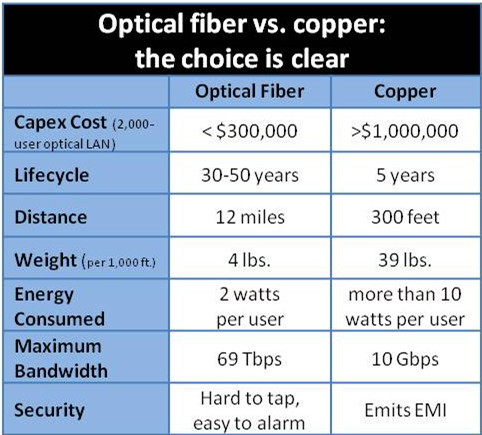There is no denying that people may encounter a dilemma when accessing which type of network cable (fiber or copper) to install, and which type you should go with. As technology develops further and supporting devices catch up, fiber optic technology is becoming more and more popular. As we know, the most obvious difference between the fiber optic network and copper network is the speed of transmitting data. Associate Professor Robert Malaney has said, “When we are talking about 'speed', we were actually talking about throughput (or capacity)—the amount of data you can transfer per unit time.” Of course, fiber optic cable can definitely transfer more data at higher speed over longer distances than copper cable. So here comes the question: why is the fiber optic technology better than copper?

How Do They Work?
To solve this problem, first we should get down to the working principles of them. Copper network works by sending electrical pulses through a copper wire. The power of the signal dictates how much of it will be retained by the time it reaches its destination. At the destination (e.g. the router), the wire’s electromagnetic field is constantly monitored for changes. As the field gets stronger, the destination registers a “1.” If it dips below a certain measurement, a “0” is registered. Copper cables must have several wires built in to accommodate the mechanisms that allow Ethernet routers to properly process signals. While fiber patch cables transmit data by sending pulses of light generated by a light emitting diode or laser along optical fibers. It conserves the data being sent by not allowing light to stop around the middle, which can be highly beneficial when you’re trying to transfer data over long distances.
Why Fiber Optic Transmission Is Faster?
It is the common sense that fiber can transmit faster data rate than copper. Why is that? Because copper has a significant signal-loss issue. To read a signal correctly during operation, you have to know the exact moment the signal has stopped and the exact moment it began. As a signal is forced to travel farther, the difference between a start and a stop (zero and one) gets very fuzzy. Copper is best used for maintaining a continuous electrical current for the great conductive property. However, for signaling, it remains a very poor material. It’s still good for local networks, but not necessarily something we should be using for global communication infrastructure, considering that Cat6a copper cables can lose 94 percent of their signal at 100 meters distance. Researchers have recently been able to send data at 10 Gbps through copper, but at distances no larger than 30 meters.
Fiber, on the other hand, can theoretically send terabytes per second of data without so much as a 3% data loss over 100 meters. The signal retention and signal clarity are two things playing an important role here. Not only do you absolutely know when the signal began and ended, but you receive a very strong signal across the wire. This allows communication at dizzying speeds so fast that most routing technologies still can’t process them fast enough. Figure 2 shows a single-mode fiber cable installation.

Through the signal’s lifecycle, fiber does another very important thing: It protects the signal from any electromagnetic interference. EM fields can influence how copper transfers data, but since optical fiber is made of extruded silica, it’s magnetically neutral. If you would have a perfect cable (there’s no such thing yet), you could theoretically send a signal across the United States without making any stops along the way.
Superiority of the Fiber Optic Cable
In both cases you're detecting changes in energy, and that's how you encode data. With copper wires you're looking at changes in the electromagnetic field, the intensity of that field and perhaps the phase of the wave being sent down a wire. With fiber optics, a transmitter converts electronic information into pulses of light—a pulse equates to a one, while no pulse is zero. When the signal reaches the other end, an optical receiver converts the light signal back into electronic information. The following table concludes the reasons why we should choose fiber.

The throughput of the data is determined by the frequency range that a cable will carry. Generally, the higher the frequency range, the greater the bandwidth and the more data that can be put through per unit time. So here we can get the key point: fiber optic cables have much higher bandwidths than copper cables. This difference determines that fiber optic cable can transfer a large sum of data at a very high speed, while the copper cable would attenuate or lose signal strength at higher frequencies. What is more, fiber optic technology is far less susceptible to noise and electromagnetic interference than electricity along a copper cable. For example, when we want to transmit data over 200 kilometers, fiber optic cable can make it perfectly, while the copper cable would suffer a lot of degradation over that distance.
Last but not the least, an added benefit of fiber optic cables is that they are not a fire hazard. This can also be attributed to the same reason that the cables do not produce EMI—there is no electric current traveling through the core. Fiber optic cables do not break as easily, even though the fiber is made of glass, copper wires are more prone to damage than fiber optic cables are.
Summary
Because of its incomparable superiority, fiber patch cable make itself a more enticing cable infrastructure solution than its copper counterpart. It has been utilized in many new cabling installations and upgrades, such as medical examinations, government services, improved productivity, telecommuting, three-dimensional conferencing and working from home. Copper, however, no longer represents a worthwhile investment and should be retired. People may hold different opinion about copper vs. fiber, please leave your message to share with us.
评论
发表评论